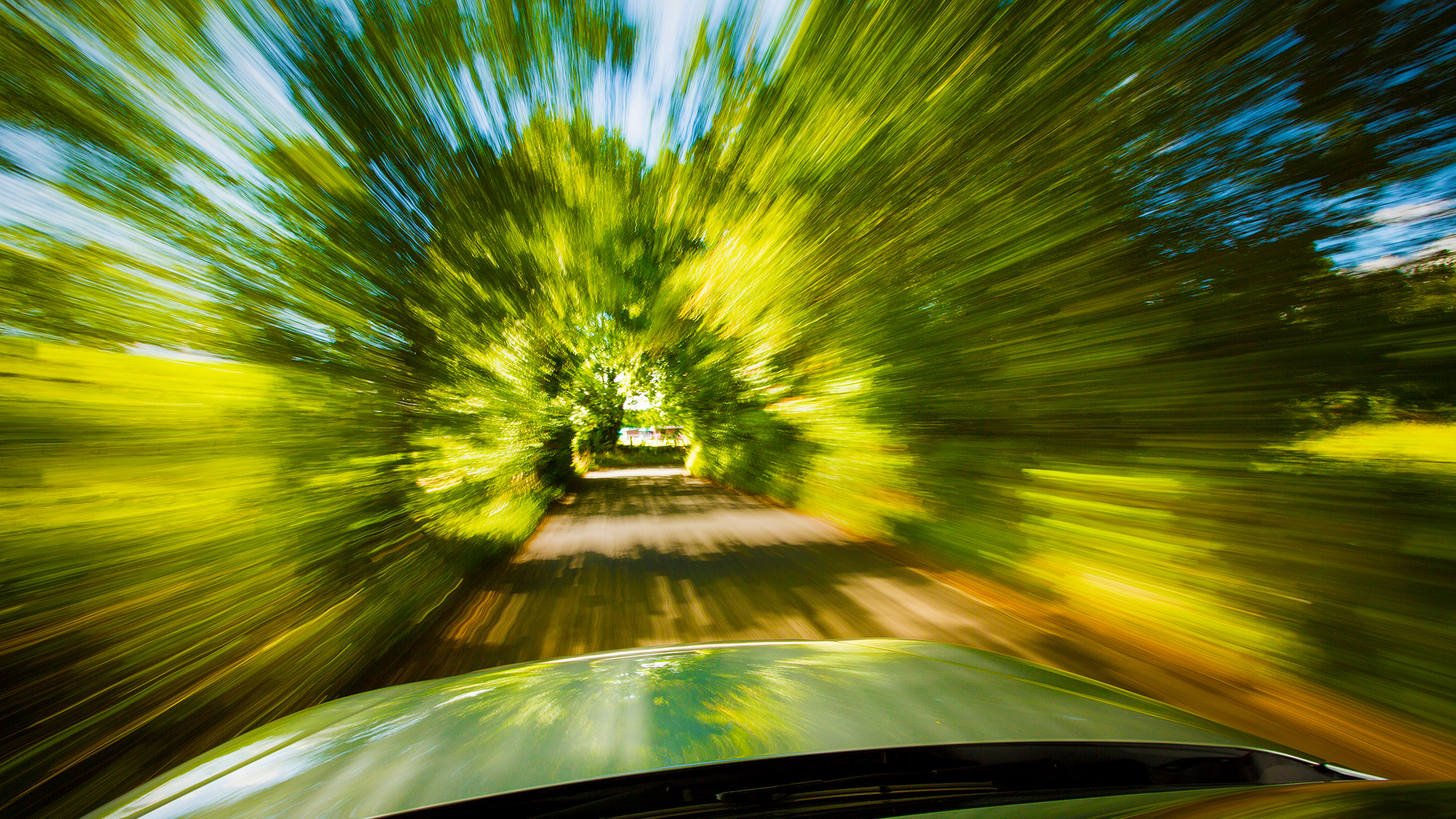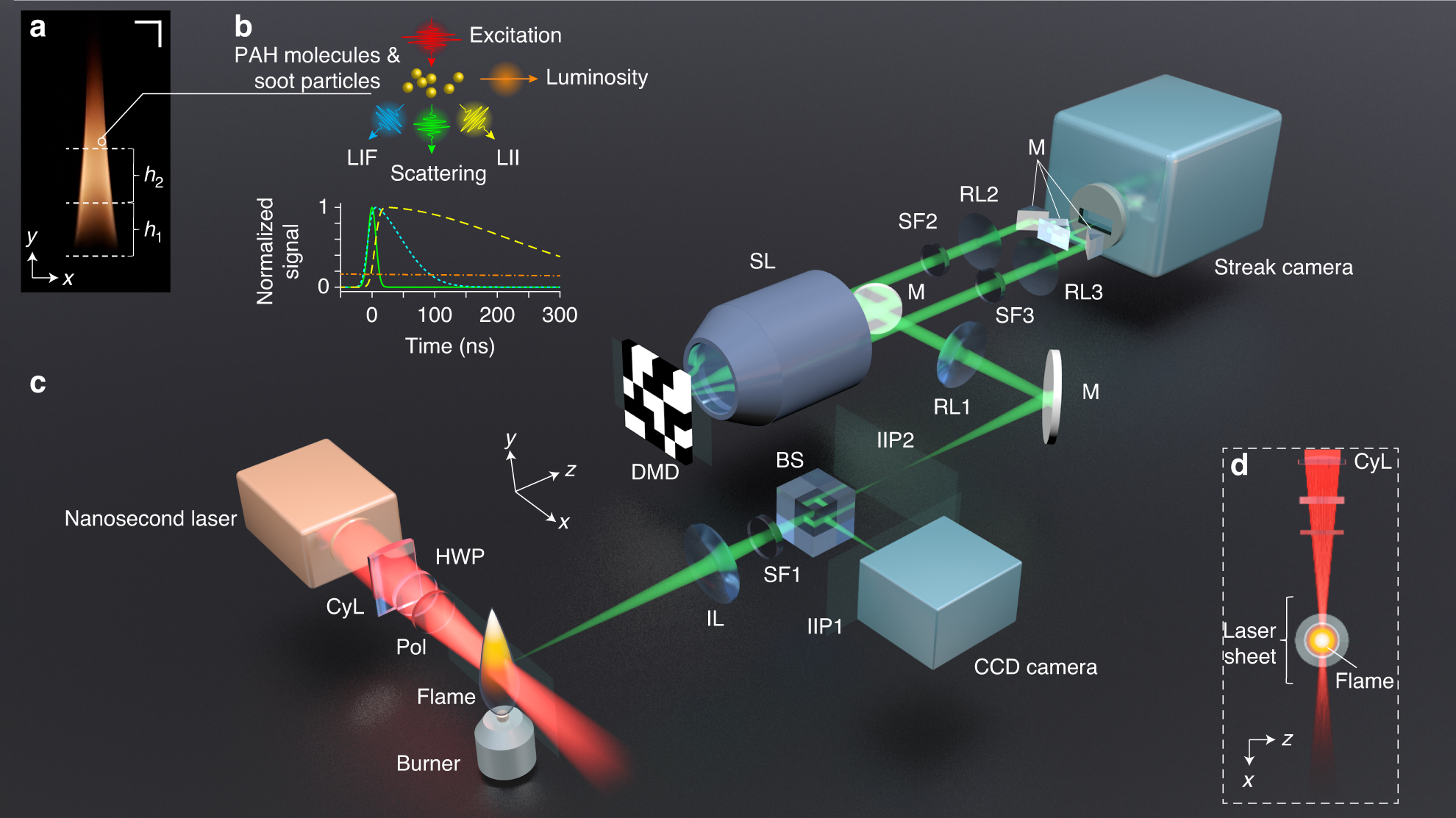Meet the world's fastest laser camera: shoots at 12.5 BILLION frames per second!
I feel the need, the need for burst shooting speed. This camera is so fast it can capture the finest details of combustion

If you thought the Fujifilm X-H2S or Canon EOS R6 Mark II were rapid-fire shooters with their 40fps burst modes, it's time to thoroughly recalibrate your expectations of speed. That's because boffins in Sweden have come up with a camera that can record at 12.5 BILLION frames per second. Yikes!
As you can probably tell, this is no ordinary camera - you won't find it being used at the next Olympics. This is in fact a laser camera designed for studying the scientific world of lightning-fast combustion of hydrocarbons, to find out what happens to a material that is burned in different conditions. This is achieved by photographing the material in a two-dimensional layer, known as LS CUP (single-shot laser sheet compressed ultrafast photography). Then by studying the sample from the side, researchers are able to observe the reactions and emissions occurring across space and time.
At 12.5 billion frames per second, the new camera is at least 1000 times faster than the current fastest laser cameras, allowing scientists to observe combustion processes in a greater than ever resolution.
“The more pictures taken, the more precisely we can follow the course of events. Hydrocarbon fuel combustion produces nano-sized soot particles, various light phenomena and polycyclic aromatic hydrocarbons, PAH, which are hazardous to the environment”
Yogeshwar Nath Mishra, University of Gothenburg
The applications for studying combustion in such detail are literally out of this world. Soot particles from hydrocarbons make up 70% of material in interstellar space, but are extremely short lived during the combustion process, being burned up in a matter of nanoseconds, hence the need for an extremely fast camera to capture their immensely brief 'lifespan'.
“Before, problems arose when the camera was limited to a few million images per second. Producing two-dimensional pictures of different types of combustion has required repeated laser pulses, which impacts the combustion temperature when the laser adds energy” Yogeshwar Nath Mishra
The best camera deals, reviews, product advice, and unmissable photography news, direct to your inbox!
It isn't only combustion that can be recorded by such an immensely fast camera. Other uses could include much broader applications in physics, chemistry, biology and medicine, energy and environmental research.
Story credit: nature.com, via Mirage News
Read more:
The 7 fastest lenses you can buy
Ben is the Imaging Labs manager, responsible for all the testing on Digital Camera World and across the entire photography portfolio at Future. Whether he's in the lab testing the sharpness of new lenses, the resolution of the latest image sensors, the zoom range of monster bridge cameras or even the latest camera phones, Ben is our go-to guy for technical insight. He's also the team's man-at-arms when it comes to camera bags, filters, memory cards, and all manner of camera accessories – his lab is a bit like the Batcave of photography! With years of experience trialling and testing kit, he's a human encyclopedia of benchmarks when it comes to recommending the best buys.


